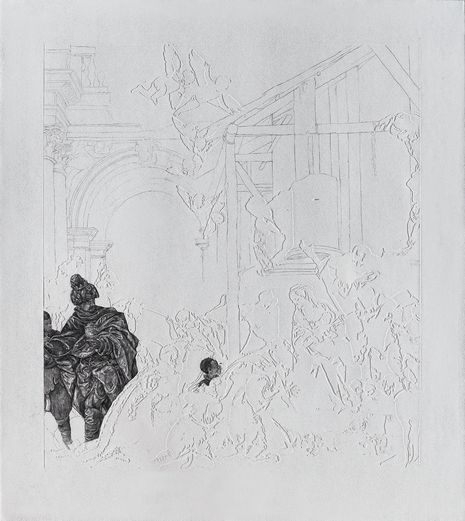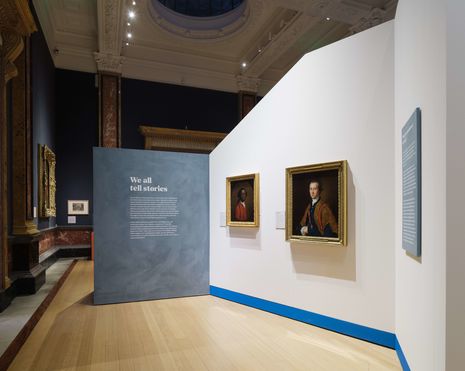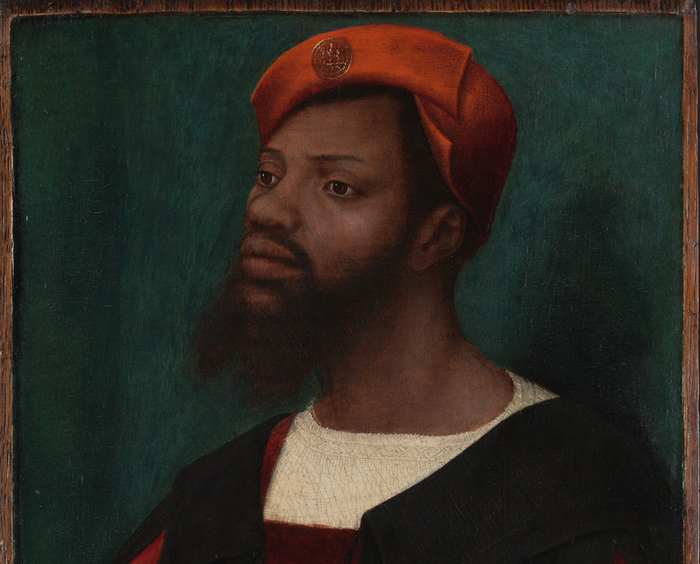In art museums, permanency matters
Saranka Maheswaran asks what institutional collections can do to uplift marginalised voices

Permanency can allude to something being static and still. Yet art on permanent view is subject to constant transformation as it finds itself bestowed with new meaning and renewed of the old. Permanency is important to the reception of art – but also to its creation and teaching.
The ‘Black Atlantic: Power, People, Resistance’ exhibition at The Fitzwilliam Museum, on display from October 2023 to January of this year, explored the role slavery plays within the infrastructure of the museum and the resistance to it through a combination of older and contemporary artworks. Robert Farris Thompson, previously a History of Art professor at Yale university, coined the term ‘Black Atlantic’ in reference to the spread of creativity of the African diaspora as they battled transatlantic enslavement and the consequences of empire.
“The Fitzwilliam Museum and the wider university need to do more on a permanent basis to recognise the devastating legacy of transatlantic slavery”
Richard Fitzwilliam, who founded the museum, emerged from a family line that actively profited from the horrifying consequences of slavery. His grandfather, Matthew Decker, was part of the group who established the South Sea company that trafficked African people to the Spanish colonial Americas. It was through this lucrative venture that the donation of the museum to the university was made possible. This should be a reality that is acknowledged always by the museum: not momentarily for the sake of an exhibition, but as a constant lens to understand the power structures that have been at play and to allow the public a platform in which critical analysis is possible.
The exhibition was incredibly important not only in uncovering the legacies of slavery, but also in exploring contemporary artists who resist the oppression faced by slaves as well as Black people today. As Amira Mumin, a HSPS student, commented, the exhibition was “positively disruptive in diversifying traditionally Eurocentric spaces, especially being done so at the hands of a Black curator.” The exhibition was co-curated by Dr Jake Subryan Richards and Dr Victoria Avery; they combined their respective knowledge in the history of empire and art to produce the collection.

Permanency is important not only to the study of art but also to its creation. Barbara Walker is a featured artist of the collection and is known well for work that returns recognition and visibility back to the Black experience in different ways. Several pieces of Walker’s art had been included in the exhibition, including ‘Marking the Moment 3’ (2022). This series overlays copies of well-preserved European artwork with graphite drawings on mylar paper. The artwork chosen features a Black person who has usually had less attention drawn to them by the initial artist; it is this figure that Walker returns awareness to by highlighting them in her graphite drawing. In this particular piece, ‘Vanishing Point 17 (Veronese)’ (2020), it is a reimagining of work by Titian of an Italian noblewoman and an anonymous Black child attendant. By using mylar paper, Walker can hone in on the child – who could have otherwise been ignored in favour of the white noblewoman – distorting the racialised gaze. It is because the works of Titian have been provided a permanent space that Walker was able to offer an alternative interpretation of it today, adding to a developing and ongoing narrative about the piece. Permanency is vital for effective discussion in art.
The exhibition was beautifully curated and illustrative of the experiences of art-making and slavery whilst in conversation with modern day forms of resistance. However, The Fitzwilliam Museum and the wider university need to do more on a permanent basis to recognise the devastating legacy of transatlantic slavery. Toga Ibrahim, an English student, highlighted how she “felt the triumph of the exhibition […] was in a kind of acceptance that the exhibition will always be limited with what it can do within the confines of the museum.”

Exhibitions are fleeting, which means access to study these works is also reduced. It is important that these ideas are open to the public to be understood, because it is only through accessibility to these histories that an active move towards anti-racist attitudes can be rendered possible.
Director of the museum, Luke Syson, commented on how longevity and permanency can be bought to the fore of diversity within art, noting “other factors in play too: who is working at the museum, how we relinquish control over our narrative, and sustain multiple interpretations and participation; how we provide a safe space for conversation that can be difficult and affecting.” Permanency is important in what is shared, but we cannot expect that sharing alone will lead to enduring discourse. Providing a third space for these discussions on a lasting basis is just as important.
A way in which this third space is actualised is through the education which the university provides in the History of Art department. Professor Emeritus Jean Michael Massing, who retired in 2017, was the last professor whose expertise lied in African art. Currently, the department is missing out on potentially vital research and education on African art, as well as broadening discourse among students and inspiring greater interest into its study.
“There are pockets of permanency within Cambridge, however it is something we need to commit to with greater vigour”
Director of the Centre of African Studies in Cambridge, Dr Bronwen Everill, spoke to me about how concepts of permanency often coincide with a matter of funding. “The things that are permanent are the things that are funded. With the arts and the humanities, especially in the current moment, there aren’t a lot of people who see it as urgent. They see questions in science […] being the place where there is an urgent need for funding.”
The university should be doing more to ensure that funding is available for the humanities, especially for the arts. Dr Everill pointed out that the Centre of African Studies is a great place to study more about African art, with it being “open to the public, [with] a great library” open to students. There are pockets of permanency within Cambridge - however it is something we need to commit to with greater vigour when considering the arts.
 News / Eight Cambridge researchers awarded €17m in ERC research grants27 December 2025
News / Eight Cambridge researchers awarded €17m in ERC research grants27 December 2025 News / Downing investigates ‘mysterious’ underground burial vault 29 December 2025
News / Downing investigates ‘mysterious’ underground burial vault 29 December 2025 Lifestyle / Ask Auntie Alice29 December 2025
Lifestyle / Ask Auntie Alice29 December 2025 Sport / Hard work, heartbreak and hope: international gymnast Maddie Marshall’s journey 29 December 2025
Sport / Hard work, heartbreak and hope: international gymnast Maddie Marshall’s journey 29 December 2025 Interviews / Meet Juan Michel, Cambridge’s multilingual musician29 December 2025
Interviews / Meet Juan Michel, Cambridge’s multilingual musician29 December 2025










